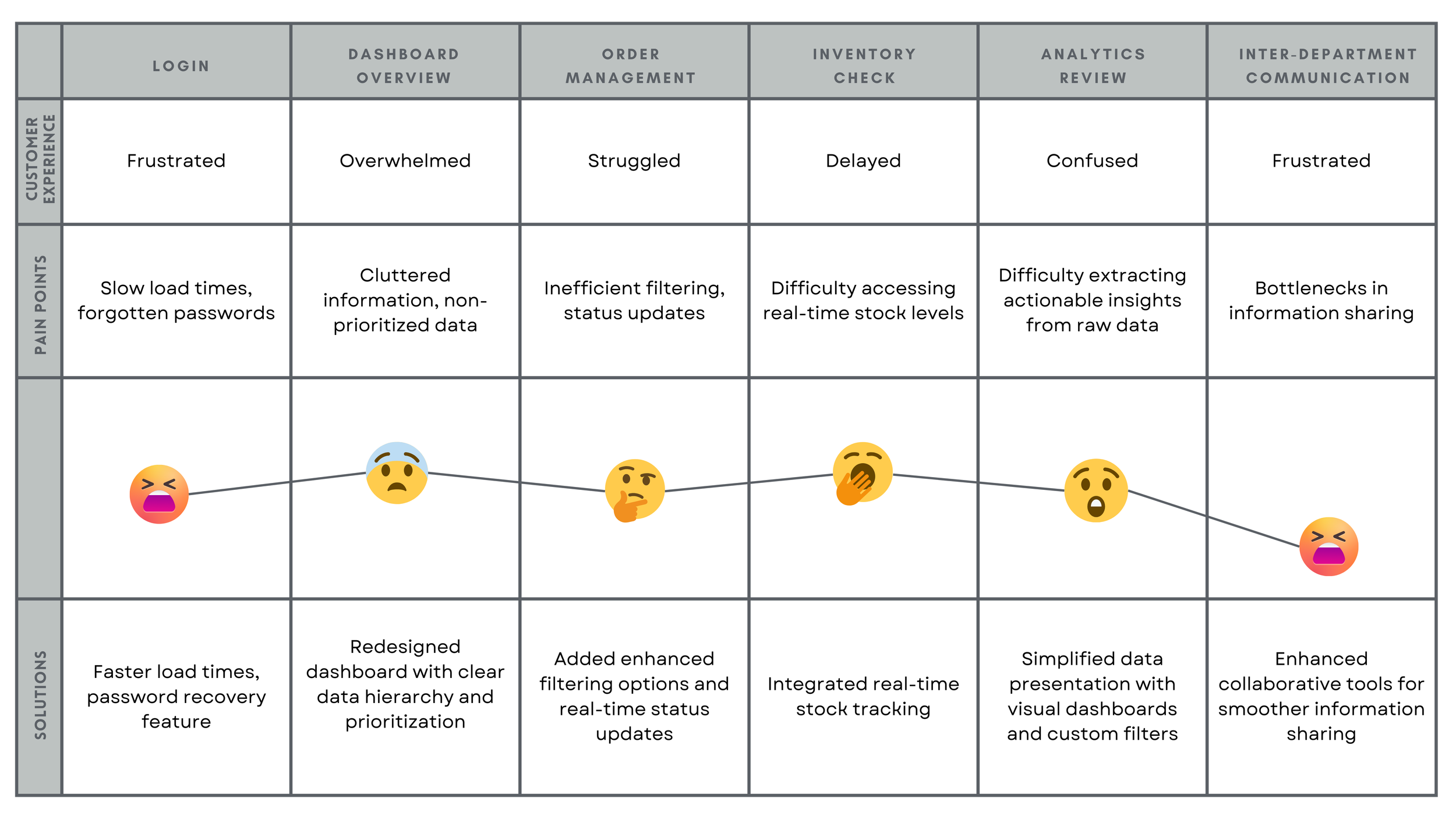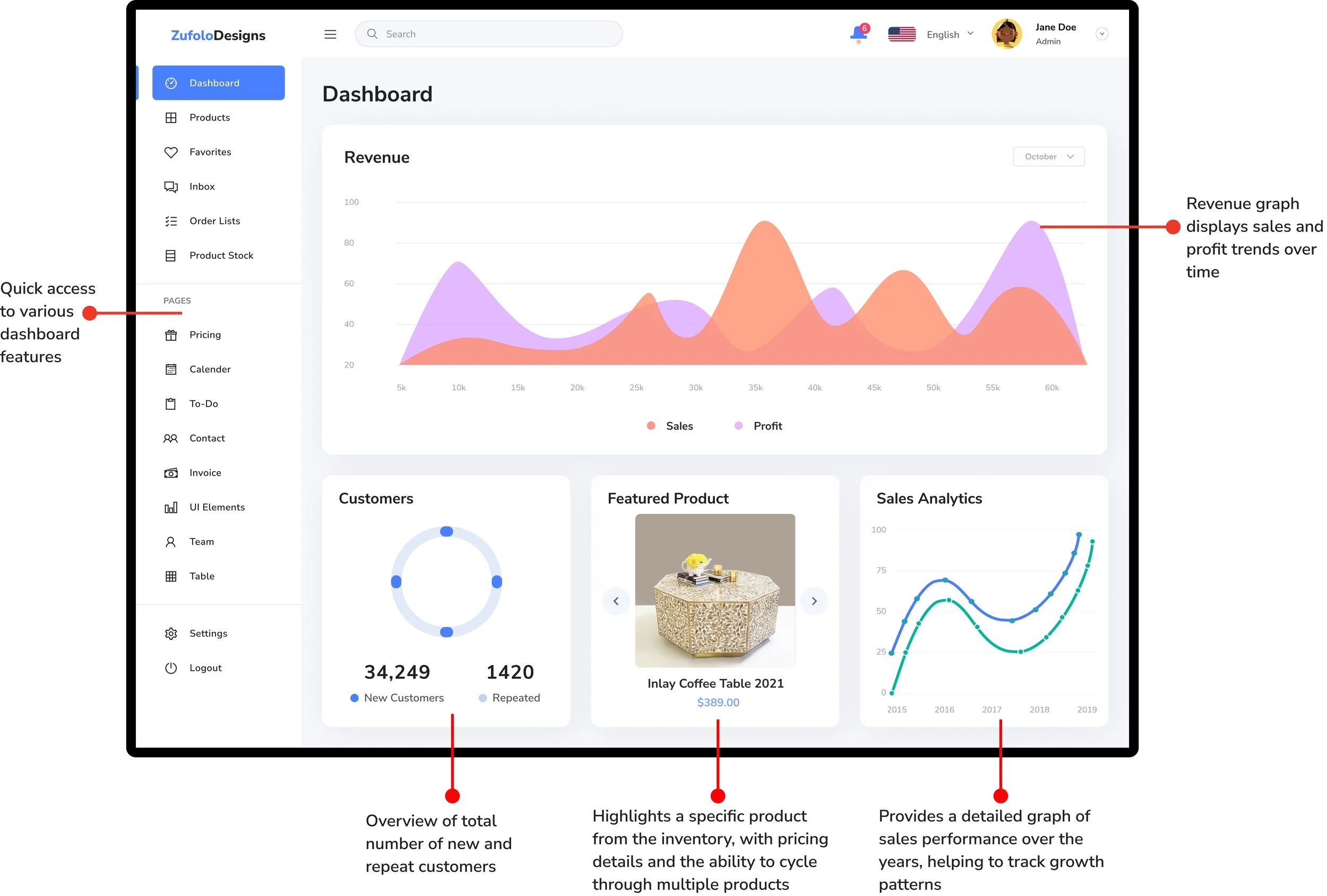How I boosted Operations Efficiency for 6K+ SMB Transactions.
Details
Zufolo Designs Pvt.Ltd.
Client
Lead Product Designer
Role
2023
Year
Outdated inventory tracking and manual workflows caused delays, stockouts, and inefficiencies. I designed a dashboard to enable real-time inventory tracking, optimize workflows, and integrate analytics.
Overview
TL;DR
Problem
Warehouse managers faced delays in order tracking, and sales teams lacked real-time inventory data, leading to inefficiencies.
What I did
I led the redesign the admin dashboard with real-time inventory tracking, streamlined workflows, and actionable analytics..
Context
As Zufolo grew, and launched its app, the limitations of the existing system became clear, with
warehouse managers and sales teams facing delays in tracking orders and accessing inventory data.
Key Insights - Desk Research
Analyzing competing enterprise retail management platforms and reviewing industry reports on retail technology trends
80% of successful platforms offered seamless omnichannel integration
3 out of 5 competing platforms offered automated compliance features for various retail regulations.
85% of emerging retail tech trends focused on cloud-based systems for improved scalability and remote access.
Key Insights - Primary Research
Interviews with warehouse managers, sales teams, and retail managers + warehouse observational research
80% of warehouse managers feel frustrated with delays in order tracking.
65% of sales teams struggle to access real-time inventory data.
75% of admins found the existing dashboard cluttered.
User Journey of a retail manager at Zufolo
The journey map reveals key pain points in login delays, cluttered dashboards, inefficient order management, and poor real-time data access.
Problem Statement
How might we design a dashboard that streamlines inventory and order management while catering to diverse user needs?
Low-Fi mockups and early testing
(with warehouse managers and sales teams)
Testing involved three rounds of iterations, where we validated navigation flow, order status tags, and overall dashboard clarity, ensuring the design was user-centric from the start.
Style Guide
UI kit: Designed with Zufolo’s branding
Design Solutions
(Hover on images for Dark Mode)
Admin Dashboard
2. Order Lists and Inventory Management
3. Invoice Generation
4. Internal Communication and Task Management
Impact
30% Faster Order Processing
18 min/order → 12 min/order
20% Increase in Sales
Flat growth → 20% increase
25% Reduction in Stockouts
30% incidence rate → 5% incidence rate
95% Staff Satisfaction
60% → 95% satisfaction
Testimonials
-
“Vidhi streamlined our inventory workflows. The new system led to a real-time, customizable dashboard that improved inventory management, boosted efficiency, and enhanced our team’s satisfaction.”
Disha, CEO & Founder, Zufolo Designs
-
“Vidhi’s inventory dashboard transformed our operations. Order tracking is now faster, workflows are streamlined, and real-time stock updates make warehouse management far more efficient.”
Anay Kumar, Warehouse Manager, Zufolo Designs
Reflections
Collaboration drives better Design!
Working closely with cross-functional teams improved my ability to translate user needs into actionable solutions.
🎯 Balancing Innovation with Constraints
Navigating budget limits and technical challenges reinforced the importance of cost-effective, scalable solutions.
📊 Data-Driven & Iterative Design
Leveraging analytics, AI, and continuous user feedback helped refine predictive reordering and workflow optimization, improving overall usability.





















